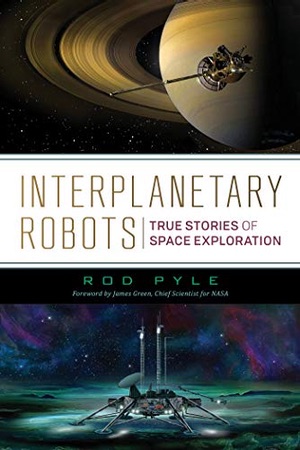Review: Interplanetary Robotsby Jeff Foust
|
| A Mars sample return mission studied by Soviet engineers in the 1970s, Mars 5M, would have involved two launches of Proton rockets, one to carry a transfer stage and the other a combination orbiter/lander. |
The more than three dozen chapters in the book are organized by destination, starting with the Moon and Mars and then moving on to Venus and the outer solar system, although Mars makes an appearance again later in the book. Interspersed throughout the book are Pyle’s experiences being at JPL for the Curiosity Mars landing in 2012, as well as being there for the end of the Cassini mission in 2017. (He also recalls, as a college student, sneaking into an event on the Caltech campus for the Viking 1 landing in 1976.)
The book does have an emphasis on missions run by JPL. Some of the book’s latter chapters go into great detail about the Galileo mission to Jupiter and Cassini mission to Saturn, both major planetary science missions run by JPL. Yet, the New Horizons mission that flew by Pluto (and, less than a month ago, the Kuiper Belt object 2014 MU69, aka Ultima Thule) is mentioned only very briefly at the beginning of the book, and there’s no mention at all of MESSENGER, the first mission to orbit Mercury. Both MESSENGER and New Horizons were run by the Applied Physics Lab in Maryland, across the country from JPL.
The doesn’t mean that the book is devoted exclusively to JPL missions: there’s some discussion of Soviet missions to the Moon, Mars and Venus in the book. That includes an examination of a concept of a Mars sample return mission studied by Soviet engineers in the 1970s, Mars 5M, that would have involved two launches of Proton rockets, one to carry a transfer stage and the other a combination orbiter/lander. It would have been a remarkably complex mission to carry out—and one likely doomed to failure given the Soviet track record for less ambitious Mars missions, had it not been cancelled in 1978. Mars sample return remains a long-term, and difficult, goal for solar system exploration.
Even though Interplanetary Robots is not a complete history of solar system exploration, it’s still an interesting book that offers a broad overview of missions, and proposed missions, throughout the solar system. Even those familiar with its history will likely learn some things about those concepts, particularly those that failed to get off the drawing boards like Mars 5M. It also illustrates how even robotic missions are truly human pursuits.
Note: we are temporarily moderating all comments subcommitted to deal with a surge in spam.
